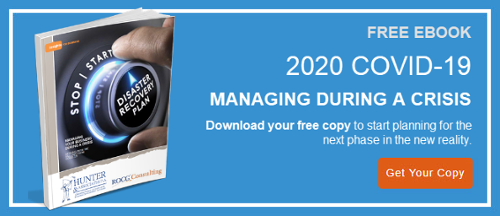
If products and services represent the nuts and bolts of the business, marketing and sales is the engine room that provides the drive for the business. In a classic episode of the TV show ‘yes Minister’, civil servants argued that the best run hospital in the health system was the one which had no patients. They had lost sight of what it was all about. In tough times it is quite vital that you do not lose sight of the importance of customers and sales.
We have reviewed the three principle areas that your management must focus on to survive and prosper in this period of change:
1) YOUR VALUABLE FORMULA - (read article here for detailed overview )
Re-assess the competitive element that generates profit and sustainable success for the business.
2) MODIFY OPERATIONS – (read article here for detailed overview)
Change the way business works to adapt quickly to the changed environment.
3) CASH MANAGEMENT – (read article here for detailed overview)
Establish the absolute priority of cash over profit and investment while the storm is blowing.
These are the inter-related and ignoring any of them will be detrimental to the long-term success of the business.
Another area of concern during times of crisis is “how do we grow revenue?” and to a conversation about marketing and sales.
MARKETING AND SALES
1) Review marketing expenditures closely but avoid the temptation to just cut this back.
A business spends money on marketing in a number of ways and much of it appears n your profit and loss statement in areas other than advertising. It is important to get a handle on what you are spending on marketing so review all areas and aggregate these. Take a close look at printing and stationery, IT costs (for your website), entertainment and any other line item where a marketing cost may be allocated.
-
-
 Once you have the full cost, calculate the percentage of sales spent on marketing over the last two or three years so that you have a benchmark to monitor against. The measure for this is ROMI (Return on Marketing Investment) and it is somewhat woolly because, as we know, much of your revenue comes from non-advertising activity (such as customer loyalty, quality service, etc.) A better measure is New Business Return on Marketing Investment.
Once you have the full cost, calculate the percentage of sales spent on marketing over the last two or three years so that you have a benchmark to monitor against. The measure for this is ROMI (Return on Marketing Investment) and it is somewhat woolly because, as we know, much of your revenue comes from non-advertising activity (such as customer loyalty, quality service, etc.) A better measure is New Business Return on Marketing Investment.- Getting a return on Marketing Investment (irrespective of how you measure it) is a challenge and most businesses use a shot gun approach that hits some of the intended targets, but also hits others who are not really the ideal prospects. The cost of a hit is the same irrespective of how “hot” (or not) the prospect is. In this climate, some market segments will have reduced propensity to buy your products, so carefully review to ensure that your marketing is still likely to hit the segments you want.
- Remember your Valuable Formula may have changed and, if that is the case, the “WHO” will buy your products may now be different. IF the WHO has changed and you continue to target the same group, it will be a waste of marketing resources.
-
2) There are a number of activities that have little or no cost but can add significantly to your marketing efforts.
-
-
- Start a referral program (give anyone who sends you a customer a small gift such as a bottle of wine).
- Develop a loyalty program (give something special to your long-standing and best customers).
- Try getting some PR in your local media.
-
3) Consider using online marketing as a substitute for traditional marketing.
There is a major global trend to redirect marketing dollars into online channels. Online media spending is growing by around 30% per annum and in many countries it is bigger than expenditure on radio advertising.
-
-
- Online channels provide significant targeted marketing opportunities.
- It is cheaper and highly effective. Consider websites and search engine optimization, e-newsletters, direct e-mail, blogs, and more.
- Online marketing is quite a measurable so you can modify your campaign according to what you see is working and what is not.
- There may be some capital cost if your website needs a freshen-up, but you can do a lot with a little in this area.
-
4) Avoid the temptation to cut prices to get the sale.
-
-
 Cutting prices cuts profits and you need profits to generate cash. The only circumstance when discounting is justified is if you have a serious cash crisis and you need to liquidate inventory simply to get cash flow in.
Cutting prices cuts profits and you need profits to generate cash. The only circumstance when discounting is justified is if you have a serious cash crisis and you need to liquidate inventory simply to get cash flow in.- Look at offering payment terms (within reason), bundling other products, extending warranties and other price maintenance measures.
- It is easy to drop prices and hard to get them back up again.
- Traditional economics says a drop in prices should stimulate the volume of sales (how much depends on the elasticity of demand). However, you need to be careful that the net effect of a price reduction is not a drop in revenue which will occur if the price reduction does not stimulate a significant increase in volume. A lower sell price will also reduce gross margin, so volumes need to be significantly stimulated to generate profitable business.
-
In our example (FIG. 2), by cutting the selling price from $7 to $6, the volume sold has increased from 150 units to 160. The revenue has fallen from $1050 (ie 7 x 150) to $960 (ie 6 x 160).
If each unit costs $4 to buy, then this business would have also lost gross profit (Gross Profit at original price was 150 units x $3 per unit = $450 Gross Profit and at the reduced price was 160 units at $2 per unit = $320 Gross Profit).
Elasticity of demand and gross profit margins need to be understood BEFORE price discount strategies are undertaken.
The news is full of opinions about what will be the “new normal” and “the possibilities.” Instead we hope to narrow the focus to just your business with these in-depth articles. Review the first three articles about managing your business for recovery:
- Managing for Recovery - Understanding Your Valuable Formula
- Managing for Recovery – Modify Operations
- Managing for Recovery – Cash Management
GET HELP
There is an old saying, “pride goes before the fall”. We are living in extraordinary times and crisis combined with the ongoing technological changes are creating an environment of uncertainty the like of which has not been seen before. You cannot assume your business is OK, you cannot assume that what has worked for you in the past will work for you now.
Stand back and get a second opinion about your business and how it is performing. Take a moment to reach out to one of our advisors. Sometimes it is beneficial just to share the burden and our proven solutions and experience can help you through to a recovery.
DEFINITIONS
Return on Marketing Investment = revenues/cost of all marketing. This gives a crude measure of the return on each dollar invested in marketing.
New Business Return on Marketing Investment = revenue from new customers/advertising and marketing costs spent on customer acquisition. The value of this measure is that if you cannot see the new business coming from current advertising and marketing costs then as a short-term tactic you may suspend this spend.
Web Analytics is a source of information available for management. You need to measure your online activity in at least these areas:
-
- Sales leads generated from each online activity.
- Site visitors – who, why and when.
- Customer experience – how useful do online visitors find your website.
Social media – what customers are saying about you in online conversations. e.g. on blogs, customer feedback sites, etc.






